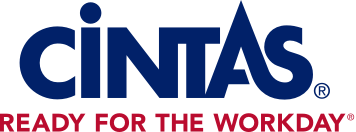Good Hand Hygiene Helps Stop Germs: Easy Tips for Your Workplace
One of the most effective ways to help prevent employees (and customers) from getting sick is to encourage proper handwashing. That’s right – using soap and water correctly can reduce your risk of getting sick. The Centers for Disease Control and Prevention (CDC) estimates that keeping hands clean can prevent 1 in 3 diarrheal illnesses and 1 in 5 respiratory infections (like the flu or common cold).
“Many germs that can make people sick are spread when we don’t wash our hands with soap and clean, running water. That is why handwashing is so important, especially at key times such as after using the bathroom, when preparing food, before eating, and after coughing, sneezing or blowing your nose,” the CDC explains on its website.
How to Properly Wash Your Hands
Removing germs and bacteria from your hands takes more than just water and a quick swipe of soap. Be sure your employees know how to properly wash their hands to stay healthy and well with these five steps from the CDC:
- Wet hands with clean, running water. Turn off the tap and apply the soap.
- Lather your hands by rubbing them together with the soap. Be sure to lather the backs of your hands, between your fingers and under your nails.
- Scrub your hands for at least 20 seconds. Need a timer? Hum the “Happy Birthday” song from beginning to end twice.
- Rinse hands under clean, running water.
- Dry hands using a clean towel.
When to Wash Hands
Knowing when to wash hands is just as important as knowing how to clean hands properly. The CDC recommends washing hands:
- After using the bathroom
- Before, during and after preparing food
- Before eating food
- Before and after caring for someone who is sick
- After changing diapers or cleaning up a child who has used the toilet
- After blowing your nose, coughing or sneezing
- After touching an animal, animal feed or animal waste
- After handling pet food or pet treats
- After touching garbage
Make Hand Hygiene Happen
Keeping employees and customers healthy goes beyond encouraging proper handwashing. You also need to be sure you have plenty of soap and sanitizer handy —in restrooms, kitchens and high-touch areas, including registers and front doors.
Keep a Steady Supply of Soap
Did you know that 76% of restroom users rate the cleanliness of the restroom based on the availability of soap? That’s an important number to remember, especially since satisfied customers are more likely to visit your business. It’s not just customers who want clean restrooms.
The Right Soap for the Job
When it comes to everyday handwashing, a regular soap can remove dirt and germs. Businesses may opt for a soap that’s lightly scented, moisturizes or made from a gentler formula so it’s less harsh on hands. Tougher jobs need tougher soaps.
Sometimes, employees need to remove tough stains or smells. Industrial soaps are effective at deep cleaning hands, and many contain moisturizers to help prevent dry, chapped hands. Specially formulated soaps can remove grease, oil, ink, carbon black and shop dirt – just to name a few. Pleasant, mild scents are also available to remove smells like fuel. Be sure you’re selecting the soap products employees and customers want — and need.
Station Hand Sanitizers Throughout Buildings
Hand sanitizer can also effectively kill germs and bacteria when water and soap aren’t available. Help keep employees and customers healthy by putting hand sanitizers around your facility. Choose from full-size floor models or desktop hand sanitizer stands to make it convenient for customers and employees to quickly sanitize their hands. Consider placing hand sanitizers in high-touch areas, like checkout registers, doorways and conference rooms.
